Saturday, December 18, 2004
Æ antoninianus, Gallienus, Rome, Göbl 591w
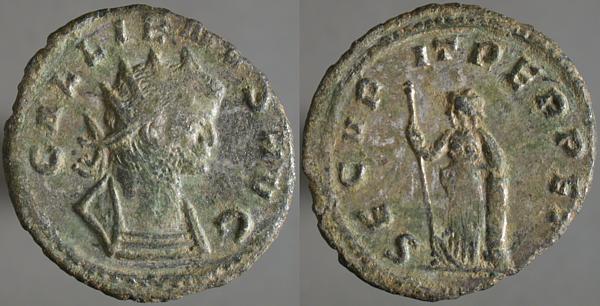
GALLIENVS AVG, Radiate cuirassed bust right | SECVRIT PERPET, Securitas standing facing, head left, holding scepter left and resting on column right.
Securitas was the personification of security, then as now the first thing we require from a government.
Friday, December 17, 2004
Æ21, Alexandria Troas, Gallienus, SNG Copenhagen 205
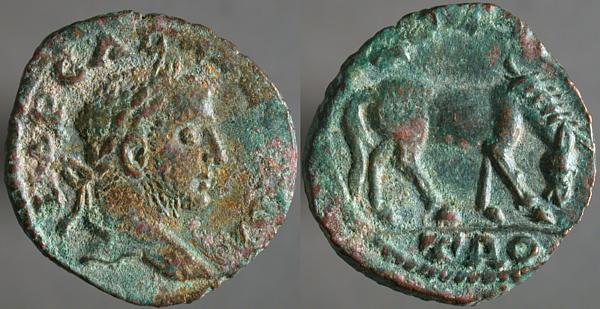
IMP GAL[LIENVS A], Laureate head right | [COL AVG] TRO, Horse grazing right.
Horses are very commonly featured on coins of Alexandria Troas, a city near the site of Troy, known for raising horses. (And, well, this horse.) The obverse features a head without drapery or cuirass, which isn't common on provincial coins.
Thursday, December 16, 2004
Silvered Æ antoninianus, Gallienus, Siscia, Göbl 1489b
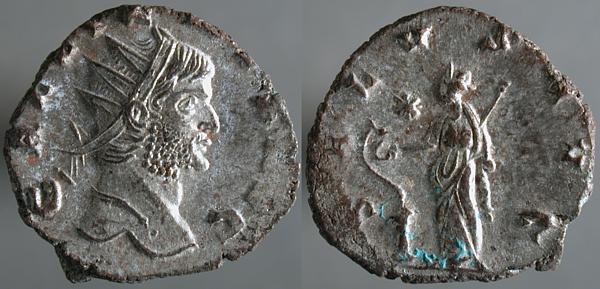
GALLIENVS AVG, Radiate head right | SALVS AVG, Salus standing facing, head left, feeding snake rising from cippa left, holding transverse scepter. Star in left field.
Salus was the Roman goddess of health. I've often wondered if her presence on a Roman coin fulfills a promise made when the emperor, or a member of his family, was ill.
Siscia is today the site of Sisak, in Slovakia.
Wednesday, December 15, 2004
Æ uncia, anonymous, Roman republic, 215-211 BCE, Crawford 41/10
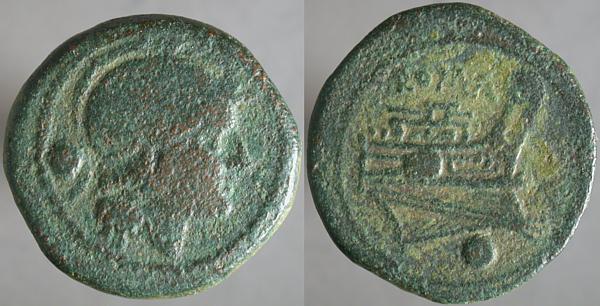
Head of Roma right, pellet behind | Prow right, ROMA above, pellet in exergue.
During this era of the Roman republic, no identifying marks were used to indicate the moneyor responsible for the issue, which also makes it difficult to precisely date the coins. Experts date this within a range, based on style and weight.
The single pellet on each side marks this as an uncia, the source of our word ounce (and inch.) Originally an uncia weighed a Roman ounce, just a little heavier than our avoirdupois ounce. This example weighs about 7.5 grams, as the Republic reduced the weight of the coins over time.
If I had it to do all over again, I might decide to concentrate on coins of the Republic.
If I thought I could afford it, of course. Well-worn bronzes like this are quite affordable, but top-condition examples of the silver coins can be brutal, and gold is a couple of orders of magnitude beyond my budget.
Tuesday, December 14, 2004
Æ29, Tyre in Phoenicia, Valerian, unknown
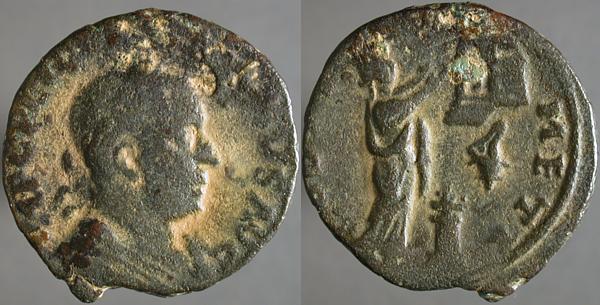
IMP C P LIC VALERIANVS AVG, Laureate cuirassed bust right | COL TVRO METR, Dido standing right worshipping before shrine, altar below, murex shell at right.
Dido, fleeing Tyre, came to Libya and founded Carthage. She's featured on a number of Tyrian coins of this reign.
Monday, December 13, 2004
Billon antoninianus, Gallienus, Samosata, Göbl 1701b(1)
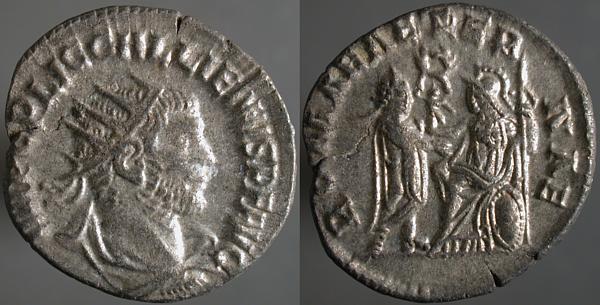
IMP C P LIC GALLIENVS P F AVG, Radiate draped cuirassed bust right | ROMAE AETERNAE, Liberalitas standing facing, head left, holding cornucopia right and counting-board left. S in left field.
ROMAE AETERNAE reverses were used during this reign at a number of mints, but usually showing Roma seated holding Victory. At Samosata, though, someone had an almost exclusive preference for designs with two figures, and here we add the emperor to the picture. Note that the emperor, standing, is the same height as the seated Roma.
Sunday, December 12, 2004
Æ33, Perga in Pamphylia, Saloninus, SNG von Aulock 4753
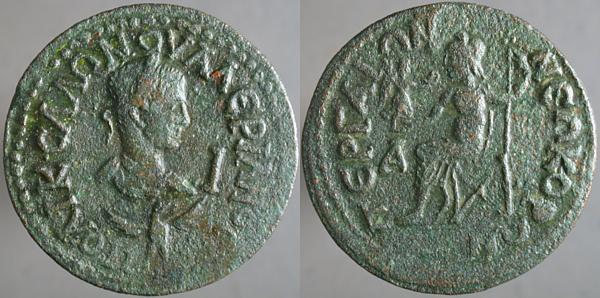
ΠΟ ΛΙΚ CΛΛΩΝ ΟVΑΛΕΡΙΑΝΟ CΕ, Laureate draped bust (of Saloninus) right over eagle with wings spread, I before | ΠΕΡΓΑΙΩΝ ΝΕΩΚΟΡΩΝ, Zeus seated left, holding spear right and Nike, who presents him with a wreath, left. A in left field.
I've previously commented on the brief life and unhappy death of this son of Gallienus.

